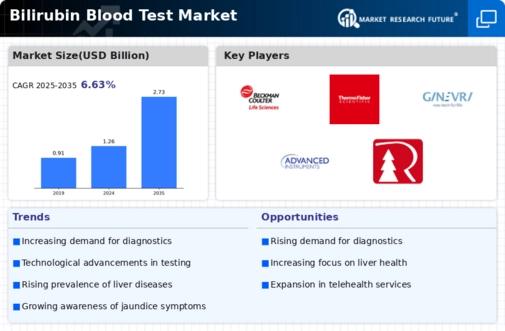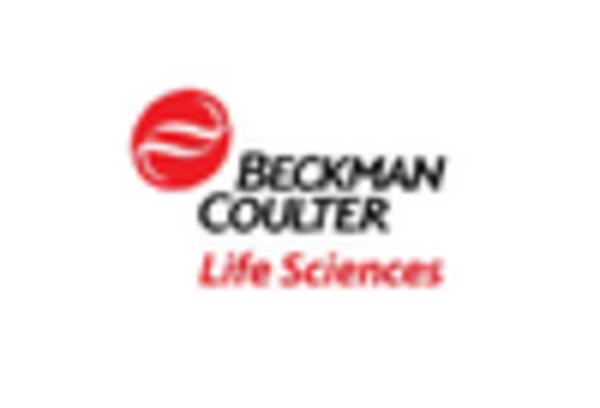Rising Incidence of Liver Diseases
The increasing prevalence of liver diseases, such as hepatitis and cirrhosis, is a primary driver for the Bilirubin Blood Test Market. According to health statistics, liver diseases have shown a notable rise, leading to a heightened demand for diagnostic tests. This trend is likely to continue as more individuals seek medical attention for liver-related issues. The Bilirubin Blood Test serves as a crucial tool in diagnosing and monitoring these conditions, thereby propelling market growth. Furthermore, the aging population is more susceptible to liver diseases, which may further amplify the demand for bilirubin testing. As healthcare providers emphasize early detection and management of liver diseases, the Bilirubin Blood Test Market is expected to expand significantly.
Growing Focus on Preventive Healthcare
The shift towards preventive healthcare is significantly influencing the Bilirubin Blood Test Market. As individuals become more health-conscious, there is a growing emphasis on regular health screenings, including liver function tests. Preventive measures are increasingly recognized as essential for early detection of potential health issues, including liver dysfunction. This trend is supported by various health organizations advocating for routine screenings, which may lead to an increase in bilirubin testing. The market is likely to benefit from this proactive approach, as healthcare providers recommend bilirubin tests as part of comprehensive health assessments. Consequently, the Bilirubin Blood Test Market is poised for growth as preventive healthcare becomes a priority for both patients and providers.
Regulatory Support for Diagnostic Testing
Regulatory support for diagnostic testing is a crucial factor influencing the Bilirubin Blood Test Market. Governments and health authorities are increasingly recognizing the importance of accurate diagnostic tools in managing public health. This recognition has led to the establishment of guidelines and frameworks that promote the use of bilirubin tests in clinical settings. Additionally, funding and support for research and development in diagnostic technologies are likely to enhance the availability and reliability of bilirubin testing. As regulatory bodies continue to advocate for improved diagnostic practices, the market for bilirubin blood tests is expected to grow, driven by the need for effective monitoring of liver health.
Technological Innovations in Diagnostic Testing
Technological advancements in diagnostic testing methodologies are transforming the Bilirubin Blood Test Market. Innovations such as point-of-care testing and automated laboratory systems enhance the accuracy and efficiency of bilirubin testing. These advancements not only improve patient outcomes but also streamline laboratory workflows, making testing more accessible. The introduction of portable devices allows for rapid testing in various settings, including outpatient clinics and home care. As healthcare systems increasingly adopt these technologies, the market for bilirubin blood tests is likely to experience substantial growth. Moreover, the integration of artificial intelligence in diagnostic processes may further refine testing accuracy, thereby increasing the reliance on bilirubin tests in clinical practice.
Increased Awareness of Jaundice and Its Implications
The rising awareness of jaundice and its implications is driving the demand for bilirubin testing within the Bilirubin Blood Test Market. Educational campaigns and health initiatives have contributed to a better understanding of jaundice symptoms and the importance of timely diagnosis. As more individuals recognize the signs of jaundice, they are more likely to seek medical evaluation, leading to an increase in bilirubin tests. This heightened awareness is particularly evident among parents, as neonatal jaundice is a common concern. The emphasis on early detection and treatment of jaundice is likely to sustain the demand for bilirubin testing, thereby positively impacting the market.

















Leave a Comment